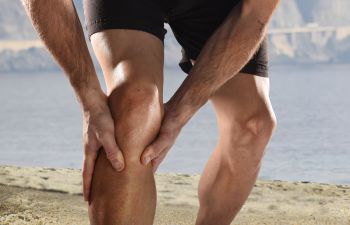
Are shin splints keeping you sidelined? Shin splints is a term that is commonly used to describe tenderness and pain on the inner side of the lower leg between the knee and ankle. Shin splints can occur in both male and females at any age. This painful condition often presents itself after physical activity, but why do some people suffer and others don’t?
The medical term for shin splints is medial tibial stress syndrome, which essentially refers to inflammation in muscular or tendinous attachment to the shin bone (or tibia). Most experts agree that the leg muscles adjacent to the tibia begin to pull on the bone’s covering, called the periosteum. This irritates and inflames the periosteum, which leads to tenderness and pain.
Why Are You Getting Shin Splints?
It can be frustrating to have to stop your runs or sit out of a game due to shin splints, especially if you get them frequently. Like other musculoskeletal and orthopedic conditions, however, it is important to determine the cause of your shin splints before you expect a successful and lasting treatment plan.
One of the most common causes is over-pronation of the foot during running. When the foot rolls too far inward during your strides, it can cause imbalance in the leg and foot. Over time, the leg muscles adjacent to the tibia may start to pull on the tibial attachment and cause shin splints.
Is it a Shin Splint?
There are other issues that can cause discomfort in the region between the ankle and the knee, including stress fractures, nerve compartment syndrome, muscle strain, deep vein thrombosis and other conditions. However, the following are typical shin splint symptoms:
- Pain midway between the knee and the ankle at the beginning of vigorous activity.
- Pain that may ease after warming up but returns after exercise.
- Tenderness on or near the tibia.
- Deep aching pain.
What Can Get Rid of Shin Splints?
At Manhattan Sports Therapy, we offer a variety of treatment options to manage and eliminate chronic shin splints. In many cases, chiropractic and physical therapy services can help you regain a more balanced gait to prevent future flare-ups. Some patients find relief when changing their shoes or adding orthotic support. In the acute care phase, you may benefit from decreased activity, ice massage and anti-inflammatory medication to reduce shin splint discomfort.
Don’t ignore shin splints or any other type of leg, ankle or foot pain when exercising. Our experts are here to help diagnose the cause of your sports-related ailments and recommend a strategic treatment plan towards relief. Call Manhattan Sports Therapy today to learn more.
Posted on behalf of
515 Madison Avenue FL 22A
New York, NY 10022
Phone: (212) 310-0100
Email: sportstherapy150@icloud.com


